Everest Base Camp Trek
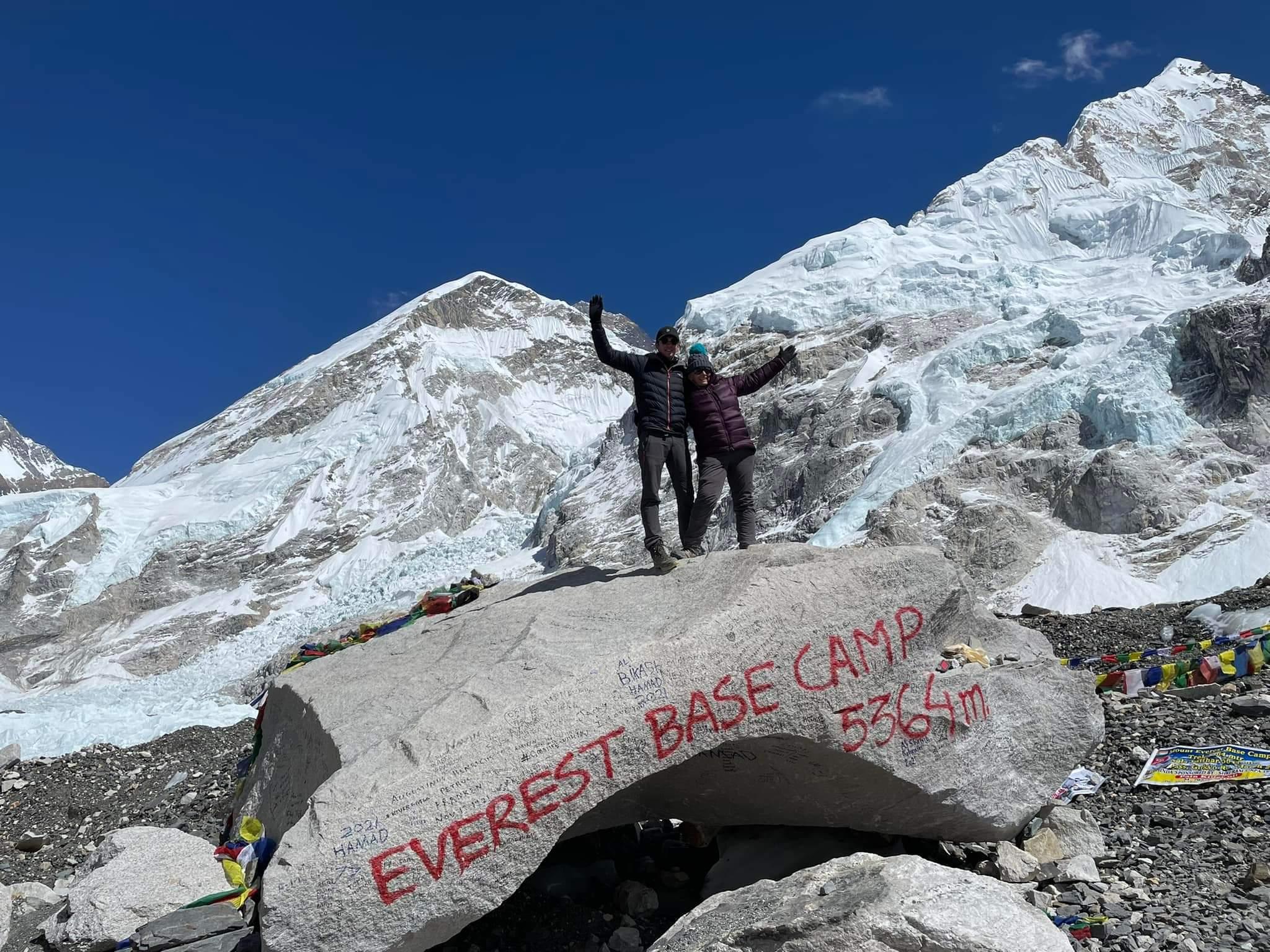
This guide is based on my experience of EBC as part of a tour and Annapurna without a guide or porter.
Itinerary
Phakding, a serene and welcoming village, is the first major stop on the Everest Base Camp Trek after Lukla. Nestled in the Dudh Kosi River valley, this picturesque village is surrounded by lush greenery and offers a tranquil respite from the bustling city of Kathmandu. Trekkers find Phakding an ideal place to acclimatize, with its comfortable teahouses and gentle introduction to the region's rugged beauty. Walking through the village, you'll be greeted by the sights of traditional Sherpa homes, prayer flags fluttering in the breeze, and the sounds of the river.
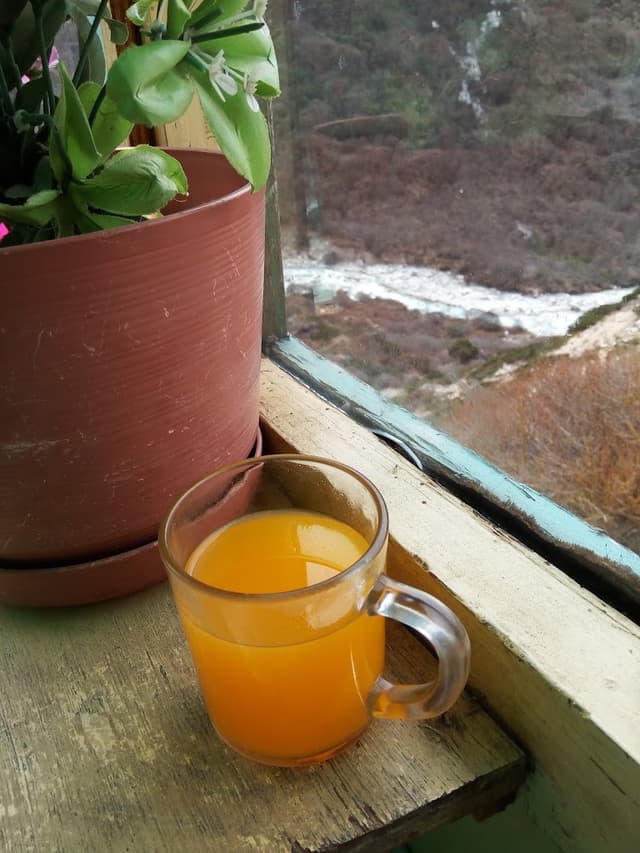
Namche Bazaar, often referred to as the gateway to Everest, is a bustling hub nestled in the heart of the Himalayas. This Sherpa-dominated town, set within stunning mountain vistas, is a crucial acclimatization stop for trekkers. It's a place where modernity meets tradition, with cozy cafes, internet access, and gear shops alongside colorful local markets and cultural sites. Trekkers use this opportunity to explore the surroundings, visit the Sherpa museum, and immerse themselves in the local way of life, all while adjusting to the higher altitude. Don’t forget to stop in Sherpa Barista Bakery and pick up a sherpa pin!

Tengboche, renowned for the Tengboche Monastery, the largest in the Khumbu region, this village offers a spiritual and peaceful atmosphere. Surrounded by forests of rhododendron and pine, Tengboche presents breathtaking views of Everest, Ama Dablam, and other peaks. The monastery itself is a center of Sherpa culture and spirituality, making Tengboche not just a scenic stop but also a place for cultural immersion and reflection amidst the Himalayan landscape. In the evening there were prayers in the monastery which you can sit and join. Take some warm clothes, it gets pretty cold inside.
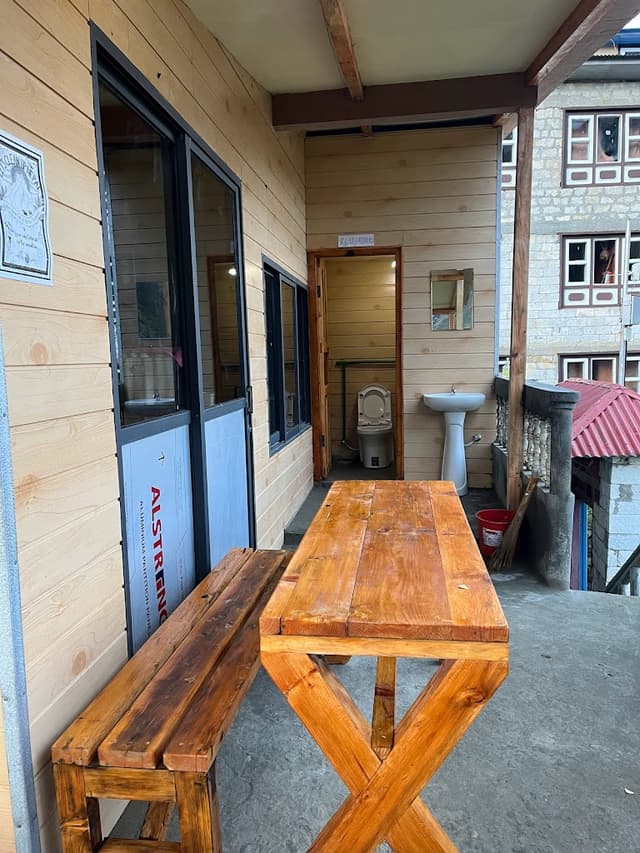
Dingboche, often a favorite among trekkers, is a picturesque village characterized by its stone walls protecting barley, buckwheat, and potato fields from cold winds and grazing animals. Located at an altitude of about 4,410 meters, it's provides stunning views of Lhotse, Island Peak, and Ama Dablam. The village is quieter and less developed compared to Namche Bazaar, offering a more profound sense of tranquility and connection with nature.
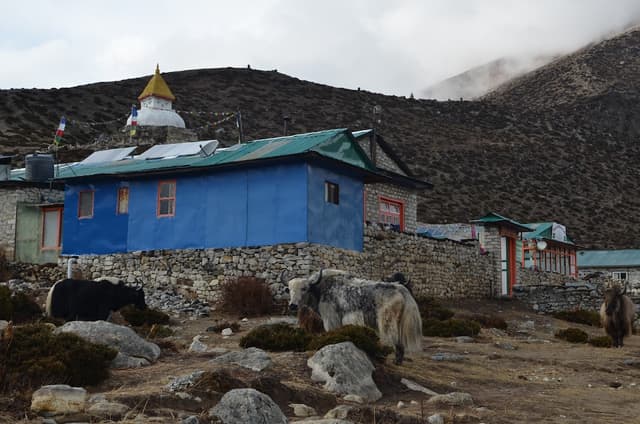
Lobuche, a small settlement en route to Everest Base Camp, stands as a testament to the harsh yet mesmerizing beauty of the Himalayas. Located above the treeline, it offers a stark, rocky landscape with views of massive glaciers and towering peaks like Nuptse. This village is often a stopover before the final push to Everest Base Camp, providing basic yet essential accommodations for trekkers. The air in Lobuche is thinner, emphasizing the high altitude, and the nights are colder, making it a place where trekkers truly feel the might and challenge of the Himalayas. Both times I arrived in Lobuche it snowed so be prepared to get your wet weather gear out quickly!
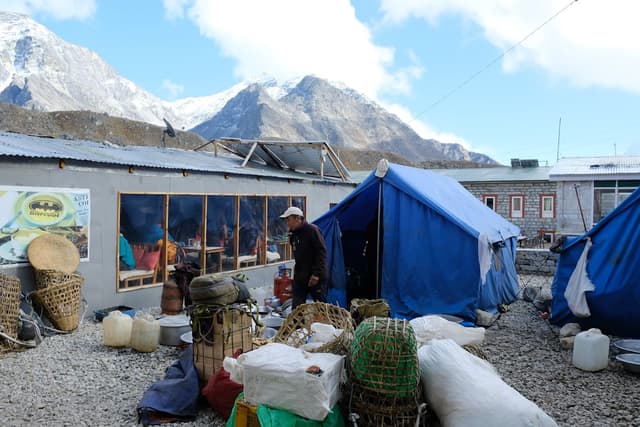
Gorak Shep, a frozen lakebed covered with sand, is the final stop before Everest Base Camp. This area, surrounded by towering peaks and glaciers, offers a surreal, moon-like landscape. Trekkers use Gorak Shep as a base to visit both Everest Base Camp and Kala Patthar, a nearby peak with one of the most spectacular views of Everest. The Base Camp itself, while not offering direct views of the summit, stands as a powerful symbol, a place where climbers prepare for their summit attempts and trekkers soak in the achievement of reaching this iconic spot.
Optional extra – extreme caution advised
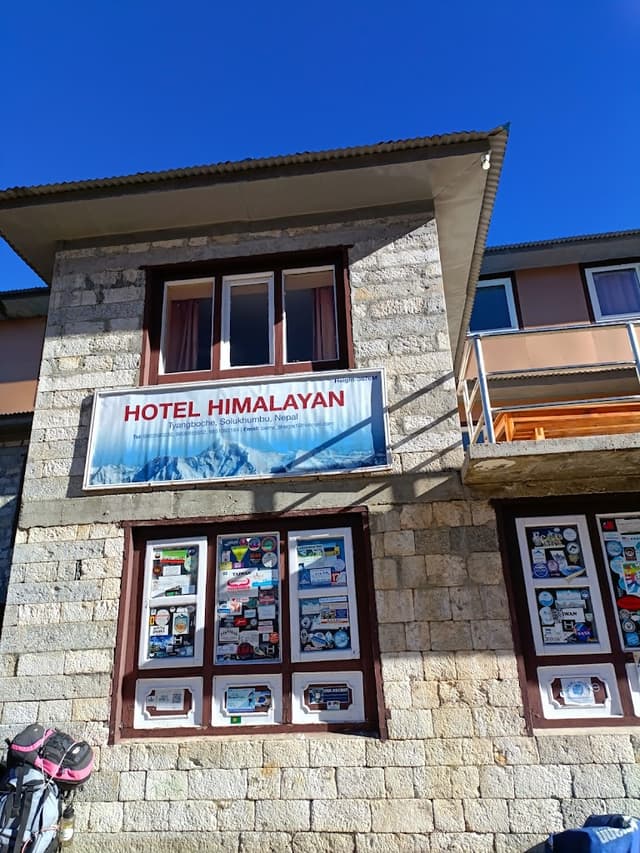
Pheriche, a quaint and remote village in the Khumbu Valley, serves as a key rest point for trekkers returning from Everest Base Camp. Known for its beautiful stone houses and situated in a broad valley, Pheriche offers a quieter and more relaxed atmosphere compared to the bustling Gorak Shep. The village is often bathed in the soft, warm light of the sun, making it a soothing place for trekkers to recover and reflect on their journey. Surrounded by stunning Himalayan scenery, Pheriche is also home to a high-altitude medical clinic, a testament to the challenges faced by mountaineers in this region.
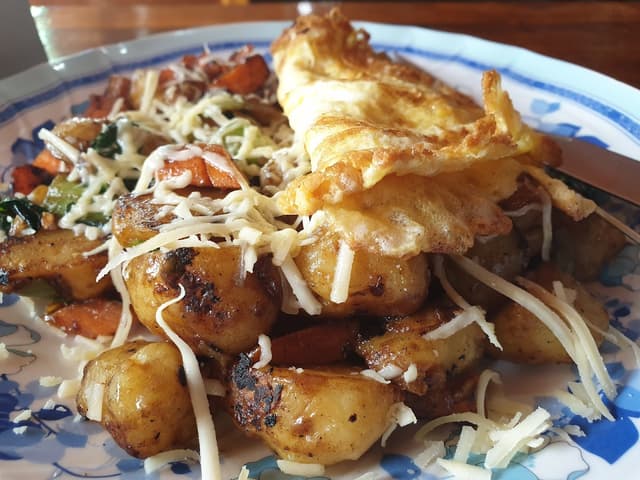
Kenjuma and Monjo are serene stops on the return journey from Everest Base Camp. Kenjuma, with its picturesque settings, provides a gentle transition from the stark high-altitude landscapes back to greener regions. It's a place for trekkers to ease back into lower altitudes and enjoy the changing scenery. Monjo, further down the trail, is known for its tranquil environment and serves as an entry point to the Sagarmatha National Park. These villages offer a peaceful respite and a chance to reflect on the incredible experiences of the trek amidst the backdrop of the Himalayas.
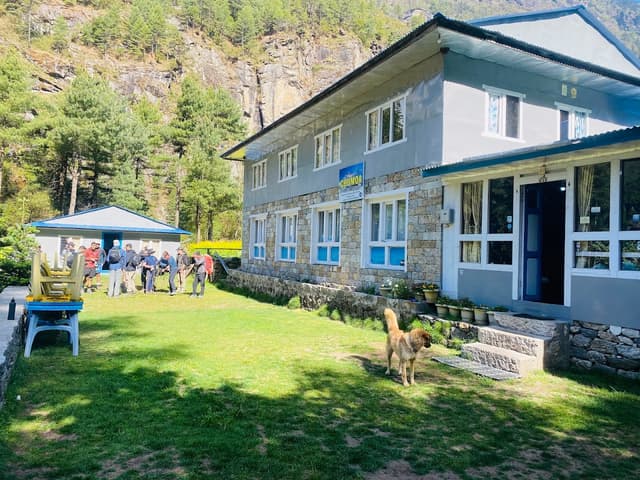
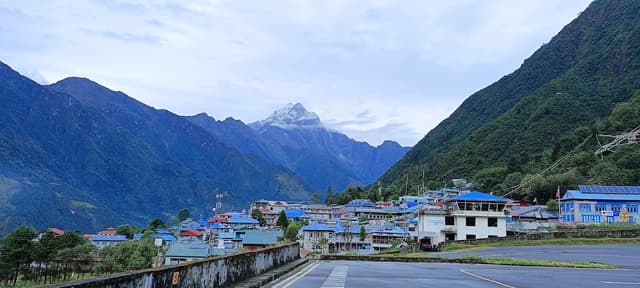
Returning to Kathmandu after the Trek and taking a day or two to relax and recover is essential. My choice for this much-needed respite was Hotel Mulberry, nestled in the bustling heart of Kathmandu. While it may carry a three-star rating, after the rigors of the trek, it felt like a luxurious five-star haven. The staff were friendly and helpful, the rooms comfortable and best of all was the roof top swimming pool. Hotel Mulberry provided a perfect space for unwinding, soothing tired muscles, and reflecting on the incredible journey to Everest Base Camp.

Preparation
So you have decided to take on Everest Base Camp, you have booked your flights, been watching YT videos, what's next? The Everest Base Camp Trek is physically and mentally challenging, you are not only facing continuous trekking up significant elevations you are also contending with extreme varying weather conditions and reduced oxygen at altitude. All of this combines to make this trek a significant feat. There are many guides available with training plans and suggestions about the preparations before you embark on this adventure, below I have explained what I did to prepare. To give some context, it is not unusual for me to walk 6 - 10 miles a day whilst exploring new destinations so I am pretty accustomed to walking.
My training
4 months prior to the trek – Where possible I ditched the car, I walked to the pub, walked to the grocery store, walked to visit friends and family.
3 months prior to the trek – I started purposefully walking with the intention of building my stamina, I encouraged my best friend to join me for weekend walks where we would walk up and over any hill near home, usually with a pub half way for a beer and food we would still cover at least 10 miles a day.
2 months prior to the trek – Every other day I would walk 8 miles. Once every weekend I would wake up at 8am grab breakfast and go out for a walk, covering up to 16 miles in a day. I also purchased my boots at this point so I could start wearing them in. I didn’t use them for all walks but at least half. When wearing your boots in, wear similar walking socks as you plan to for the real trek, you’ll notice a big difference between normal socks and walking socks and it may feel like you are wearing the boots in all over again if you don’t start with proper socks to start with.
1 month prior to the trek. I continued as above, 2 weeks prior to the trek I reduced my walking so my feet were not too tired out!
What should you take?
This is the list of items I took with me for the for the Everest Base Camp Trek, be mindful that I am typically a light traveler, others I was with struggled to reduce their bags to an acceptable weight. Have a look at my guide "EBC Shopping List" for more details about the type of clothing and brands I used and can highly recommend:
Essential Clothing:
Base layers x 3
Insulating layers x 3
Fleece x 1
Insulated Jacket x 1
Waterproof and windproof jacket x 1
Trekking trousers and shorts x 2
Thermal underwear x 5
Hat, lining gloves, thick insulated gloves, scarf and bandana x 1
Footwear:
Sturdy hiking boots (broken in)
Good quality hiking boots suitable for the
Walk are critical, you’ll see locals running up and down in trainers and sandals, please don’t try this! If you start experiencing problems with your feet this will not be an enjoyable trek.
Trekking socks x 5 (wool or synthetic)
Normal socks to sleep in and for evenings x 2
Sandals or comfortable shoes for evenings.
As soon as you reach your accommodation for the evening take your boots off, take your socks off and air your feet, sweaty feet in sweaty boots results in frozen boots the following morning (I experienced this one day, it’s not too enjoyable). If needed dry your boots near the heater in the communal area.
Gear and Equipment:
Backpack - Various sources online suggest 60-70L if carrying your own stuff, I used a 50L and it was more than enough, I had a laptop for remote work too.
Sleeping bag (appropriate for cold temperatures)
Headlamp with extra batteries
Sunglasses and sunhat
Water bottles or hydration system
Basic first aid kit
Waterproof bag cover
Personal Items
Toiletries (toothbrush, toothpaste, biodegradable soap, etc.)
Sunscreen and lip balm with SPF
Personal medications and any necessary prescriptions
Diamox (acetazolamide) – Alititude sickness tablets. I would recommend having these spare just in case you need them and I would also suggest you purchase them from a pharmacy at home, there had been reports of fake Diamox tablets in Kathmandu
Hand sanitizer and wet wipes
Toilet roll
Electronics
Camera or smartphone for photos
Portable charger or power bank/solar bank
Spare batteries or chargers
Documents
Passport and necessary visas
Trek passes (Details below)
Travel insurance documents
Cash in local currency ($600 minimum)
Snacks and Extras:
Energy bars, chocolates, or trail mix
Water purification tablets or a water filter (I used water purification tablets in boiled water, overkill I know but I thought it was better to be as safe as possible)
Remember, it's essential to pack light and only carry what you need, as every extra kilogram can be burdensome at high altitudes. Also, consider the time of year you'll be trekking, as weather conditions can greatly influence your packing needs.
What to Expect whilst trekking to EBC
The Everest Base Camp Trek offers basic facilities, reflecting the remote and rugged nature of the region. Here's an overview of the types of facilities you can expect, particularly regarding toilets and showers:
Toilets
Squat Toilets: These are traditional Asian-style toilets that involve squatting over a hole in the ground.
Western-Style Toilets: Available in some lodges, especially in larger villages. However, they are still quite basic, flushing method is normally a jug of water taken from the bucket next to the toilet.
Toilet Paper: I didn’t find a place this was provided, so it's advisable to carry your own. Some teahouses will sell toilet paper but expect it to be expensive (£2-3 per roll)
Showers
Hot Showers: Available at an extra cost in some teahouses and lodges. The price increases with altitude.
Solar Showers: Some places might have showers heated by solar power, but their effectiveness depends on weather conditions.
Bucket Showers: In more remote or higher-altitude areas, a bucket of hot water with a jug (heated on a stove) may be provided for washing, again at an extra cost.
Other facilities
Dining Area: Teahouses have a communal dining hall where meals are served. These areas are often heated and are the central hub for trekkers to gather and socialize. If bedrooms are sold out you may end up sleeping in this area.
Electricity and Charging: Available in most teahouses, but electricity becomes less reliable and more expensive as you ascend. It's advisable to bring spare batteries or a power bank. If there are several people staying in the same accommodation as you there may be very limited availability to charge your device.
Internet: Limited availability. Some teahouses offer Wi-Fi for an extra charge, but the connection is often very slow and unreliable.
Drinking Water: Bottled water is available for purchase, but it's more eco-friendly to use water purification tablets or a portable water filter.
Laundry: I didn’t enquire about laundry services during the trek, washing by hand is possible.
While the facilities on the Everest Base Camp Trek are basic, they are part of the experience of trekking in the remote Himalayas and add to the adventure's authenticity.
Porters
Before I started the trek I was unsure about the use of porters to carry luggage, I felt a little uneasy using someone else to carry my things rather than doing it myself. Having spent some time trekking both EBC and Annapurna I gained a much greater understanding of this critical role. There are two methods to transport luggage, equipment, building materials, food and anything else you can think of. Firstly helicopter, this is noisy, costly and not great for the environment. You then have porters, locals who are able to carry a multitude of items up and down very challenging terrain. On my way down from EBC I witnessed a porter carrying a full size fridge/freezer up the mountain wearing only flipflops, making it look easy.
On the Everest Base Camp Trek, hiring a porter typically costs between USD $25-$30 per day. This cost can vary slightly based on different factors such as the specific trek and the porter's experience. Porters play a crucial role in carrying your heavy bags, making your trekking experience more comfortable and enjoyable. Remember, this cost is separate from any tips you might choose to give at the end of your trek. A porter would normally carry up to 30kg of luggage, with 15kg of luggage normally expected per person. If you are feeling really adventurous and wish to carry your own luggage I would recommend absolutely no more that 15kg for yourself, although 10kg would be preferable. As you gain altitude you will really notice the additional weight you have on your back.
Finding a porter is a fairly straightforward process, the two widely available options would be to either contact a porter company in Kathmandu and organise for a porter to meet you at Lukla. Alternatively it is possible to find companies in Lukla that can organise porters for you. An experienced porter will be invaluable as a porter/guide but be prepared to pay a little more for the experience.
Budget
When planning the budget for your Everest Base Camp Trek, it's important to consider that the cost of food and necessities increases as you ascend. On average, daily expenses for meals and drinks can be around $30. This includes hot meals priced at about $6, with drinks costing an additional $1. It’s also worth noting that snacks like chocolate bars are more expensive on the mountain, priced around $3-5 each. While there are ATMs available in Namche Bazaar and Lukla, they can run out of cash quickly, and it's advisable to carry sufficient cash with you. Teahouses, which are the primary accommodation during the trek, accept only cash payments. Therefore, if on an organised tour it's recommended to bring around $600 for food and additional expenses, including tips for porters and guides, as well as costs for WIFI and phone charging, which increase at higher altitudes. This amount should comfortably cover your basic needs without the worry of running out of funds.
If you are in a tour group, all of your accommodation costs, porter and guide (excluding tips) will be covered. If you plan to conquer this trek independently accommodation costs will also need to be considered.
The typical cost for staying in a teahouse during the Everest Base Camp Trek varies. Generally, you can expect to pay between $5 to $30 per night for a well-equipped and reliable teahouse. It's important to note that the quality and facilities of teahouses can differ, especially at higher altitudes. Most teahouses provide basic amenities needed for a comfortable stay. Keep in mind that prices can vary based on different factors like trek and altitude.
Trekking Permits
For the Everest Base Camp Trek, you will generally need two main types of permits to trek through the regions. These permits will be checked so don’t take the risk of starting this adventure without them:
Sagarmatha National Park Permit: This permit is required because the trek passes through Sagarmatha National Park. The fee for this permit goes towards the conservation and maintenance of the park. The cost is usually around 3,000 Nepalese Rupees (approximately $23-$30 USD), but it's advisable to check for the most current rate. Get this at the Nepal Tourism Board office in Kathmandu.
Khumbu Pasang Lhamu Rural Municipality Entrance Permit: This permit is required instead of the TIMS (Trekkers’ Information Management System) card for trekkers in the Everest region. The cost for this permit is usually around 2,000 Nepalese Rupees (approximately $15-$20 USD). You will get this permit from a checkpoint in Lukla, it isn’t available in Kathmandu.
It’s important to keep these permits with you throughout the trek, as you may need to show them at various checkpoints along the route.
Kathmandu and Flights to Lukla
Having travelled to many countries, I expected Kathmandu, to be similar to cities dotted throughout Asia. Kathmandu is a vibrant, colourful and culturally rich metropolis, with the most crazy traffic, think Bangkok on steroids! Be prepared for an overload of senses for your first day from the people, the bikes, noises and smells. It is the gateway to the Himalayas and is a melting pot of history, tradition, and modernity. In Kathmandu, ancient temples and stupas coexist with bustling markets, modern cafes, and a lively street scene. The city is renowned for its UNESCO World Heritage Sites, including the Swayambhunath and the historic Durbar Square, where intricately carved temples and palaces showcase the artistry of the Newar people. You can immerse youself in the city's spiritual atmosphere, savor traditional Nepali cuisine, and explore its diverse neighborhoods.
For your flight to Lukla, you should aim to get to the airport as soon as possible. Even if you have purchased a ticket it is not a guarantee you’ll make it onto a flight that day. You want to be the first in the queue. Weather can vary significantly in the Himalayas and can change at a moments notice. You’ll be flying into Lukla airport, one of the shortest and steepest runways in the world. The slightest bad weather will cancel all flights. Once you have made it onto a plane you will be transported via a twin prop plane with around 16 seats, very soon you will be surrounded by giant mountains either side of the plane with spectacular views of mountain peaks and tiny villages.
Food and Drink
Eating and drinking properly is crucial on the Everest Base Camp Trek to maintain your energy levels and prevent altitude sickness. Here are some key eating and drinking tips for your trek:
1. Stay Hydrated: The dry mountain air and physical exertion mean you need to drink more water than usual. Aim for at least 3-4 litres of water a day. As you gain altitude, increase your water intake. Remember, dehydration can increase the risk of altitude sickness.
2. Avoid Alcohol and Caffeine: Alcohol and caffeine can dehydrate you and exacerbate the effects of altitude. It's best to avoid them, or consume them very sparingly.
3. Eat High-Calorie, Nutrient-Rich Food: Your body will burn a lot of calories. Eat meals rich in carbohydrates and protein. The local dish, Dal Bhat (rice, lentil soup, and vegetables), is a great choice as it's nutritious and replenishing.
4. Regular Meals: Eat three meals a day. Skipping meals can deplete your energy reserves and make you more susceptible to the cold and altitude sickness.
5. Snack Wisely: Carry and consume high-energy snacks like nuts, energy bars, chocolate, dried fruits, and granola bars throughout the day.
6. Safe Drinking Water: Drink only bottled water, boiled water, or water treated with purification tablets. Avoid drinking water directly from streams or rivers as it might be contaminated.
7. Hot Beverages: Regularly consume hot beverages like herbal teas, hot lemon water, ginger tea, etc. These can be comforting and help keep you warm.
8. Listen to Your Body: High altitude can sometimes suppress your appetite. Eat even if you're not feeling very hungry, but listen to your body and don't force-feed.
9. Avoid Meat: As you move higher, it's advisable to avoid meat because fresh meat is hard to come by and you risk foodborne illnesses.
Acclimatisation Days
An acclimatisation day is a crucial aspect of high-altitude trekking, including the journey the journey to EBC. It is essentially a day set aside for allowing your body to adjust to the lower oxygen levels at higher elevations. This process of adaptation is vital to prevent altitude sickness, which can be serious and even life-threatening.
During acclimatization days, you don't continue ascending to higher altitudes. Instead, you either rest at your current altitude or engage in a light activity like a short hike to a slightly higher elevation, followed by a return to the lower elevation to sleep. This practice follows the mountaineering principle of “climb high, sleep low,” which aids the acclimatisation process.
1. Reducing the Risk of Altitude Sickness: As you ascend to higher altitudes, the amount of oxygen in the air decreases. Your body needs time to adapt to functioning with less oxygen. Without proper acclimatisation, you risk developing altitude sickness, characterized by symptoms like headaches, nausea, fatigue, and dizziness.
2. Improving the Success Rate of Your Trek: Proper acclimatisation increases your chances of successfully completing the trek without having to turn back due to altitude sickness.
5. Better Adaptation to Environmental Conditions: Spending more time at altitude helps your body adapt not just to the oxygen levels but also to other environmental factors like temperature and humidity.
Booking Accomodation
Booking teahouses for the Everest Base Camp Trek can vary depending on your approach to the trek. Here are a couple of methods:
1. Through a Trekking Company: If you are trekking with a guided tour or trekking company, they will typically handle all teahouse bookings for you. This is the most hassle-free option, as the company will have established relationships with the teahouses and can ensure accommodation even during busy seasons.
2. Independent Trekking: If you're trekking independently, you have a couple of options:
- Book in Advance: This can be challenging, as many teahouses along the EBC route don't have online booking systems or easy ways to contact them from abroad. However, some might have contact information available, and you can try calling ahead, especially during peak seasons. Have a look at the accommodation options, several of them will have whatsapp and reply in English
- Book Upon Arrival: Many independent trekkers simply find accommodation upon arrival in each village. This is often feasible during the off-peak season. During peak trekking seasons (spring and fall), it's advisable to arrive at your daily destination early in the afternoon to secure a room, as teahouses can fill up quickly.
3. Using a Porter or Guide: If you have hired a local guide or porter, they can often assist with finding and booking teahouses. They usually have good knowledge of the available options and can negotiate on your behalf.
4. Flexible Plans: It's wise to have a flexible itinerary, as you may need to adjust your plans based on teahouse availability, especially during peak seasons.
Teahouses are basic lodges that provide a bed and meals. They vary in comfort and amenities, and the options become more basic as you ascend higher. Having a plan for accommodation is important, but being adaptable is equally crucial, as conditions throughout the trek can change.
Other general tips
Before going to bed, ask the teahouse staff to pour boiling water into your water bottles and use them as bed warmers.
Sleep with your phone and any batteries in the bed with you. Your body heat will protect battery life a little.
Yaks and animals have right of way, just move out the way and wait. If you see them on the other side of a bridge, again just wait.
The home for unique & authentic travel